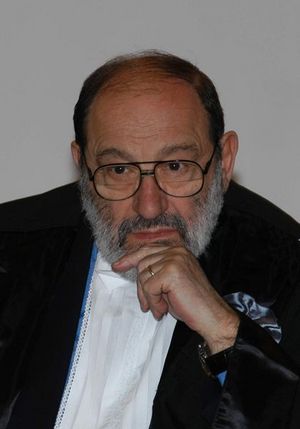Narrated by the 80-year-old Benedictine monk Adso, “The Name of the Rose” relates events that occurred over a one-week period in 1327 when Adso (then an 18-year-old novice) and his master, the English Franciscan monk William of Baskerville, visited an abbey in northern Italy. The action takes place during the controversy over Apostolic poverty that occurred between the Franciscans and Dominicans, and during the course of the story a Papal legation including the inquisitor Bernard Gui arrives to evaluate allegations of heresy. At issue is the poverty of Jesus and whether or not the Church should accumulate wealth. These concerns however are overshadowed by the mysterious death of the monk Adelmo which is followed by 6 sequential murders of monks during the week. William’s time is consumed by an investigation of the mysterious deaths, and a large part of the popularity of this novel is based on the clever unraveling of the mystery that occurs as a result of William’s deductive reasoning and interpretation of symbols. The abbey has an elaborate labyrinthine library with many rooms laid out as regions of the world as it was known at the time with secret passages accessed by hidden mechanisms. A mysterious book it contains holds the answer to at least some of the murders. Ironically, when the mystery is solved, the murders turn out not to be part of a plan patterned on the Apocalypse, as William suspected, but rather a suicide followed by a serious of murders connected with illicit trysts between monks and an elaborate attempt of one monk to suppress information in Aristotle’s book on Comedy (a lost work that suggests laughter is an appropriate response to the mysteries of the universe).
The novel clearly reflects the erudition of its author who is a professor of semiotics and an expert on medieval times. There is a lot of Latin in the book (without translation) which puts the average (Eco would say “unsophisticated”) reader like me at a disadvantage. There are long enumerations of medieval minutiae such as the entire chapter devoted to Adso’s inspection of the fantastic creatures carved on the church’s doors. In the postscript, Eco says the “long didactic passages” were intentional and served to set the pace of the book. His friends and editors advised him to shorten the first 100 pages of the book because this section was “demanding” but he refused, believing “if somebody wanted to enter the abbey and live there for seven days, he had to accept the abbey’s own pace.”
Near the end of the book, William gives Adso some advice about where the real danger (as opposed to the risk of heresy) lies: “The Antichrist can be born from piety itself, from excessive love of God or of the truth, as the heretic is born from the saint and the possessed from the seer. Fear prophets, Adso, and those prepared to die for the truth, for as a rule they make many others die with them, often before them, at times instead of them.” I found this argument very compelling.
Finally, don’t ask what the title of the book means. Apparently, Eco wrote the postscript in response to that question, and even after reading the postscript I still don’t understand it. He says he chose the rose as a symbolic figure so rich in meanings that by now it hardly has any meaning left. What? The title is a cliché? I guess I am just one of those “unsophisticated” readers! Read the book yourself and decide if it is worth the effort.



